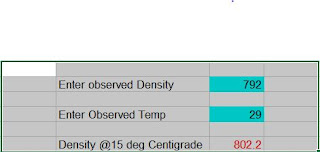- LPG, CNG, LNG, NGL, PNG - Petroleum terms understanding
- LPG, CNG, LNG, NGL, PNG - Petroleum terms understanding
There is no doubt tomorrow's energy needs will be totally derived from nature that's Solar, Wind and Hydro however, may be before this now is the time of Gas fuels for next two decades at least.
Petroleum Industry has already stepped in Gas age from liquid age fuels. CNG/LPG has taken over role of Gasoline/diesel as auto fuels. CNG/LNG has replaced Naphtha, Diesel, Residual Fuel Oil etc in electric generating power plants and other industry as fuel replacement. Kerosene in kitchen is being replaced by LPG which is further replaced by PNG in cities.
Every day we hear petroleum terms like LPG, CNG, LNG, NGL, PNG etc and get rather confused.
This post is therefore created, without using high technical terms, for layman primarily now. I am sure this will help in knowing these petroleum terms and enhance understanding of fuels better.
The following table is an attempt for creating a picture in common human mind to get clear idea on questions like:
a) What is difference between CNG and PNG ?
b) What is difference between LNG and NGL ?
c) Is PNG vapour is lighter or heavier than Air ?
d) Is my PNG leak detector installed at my kitchen roof ceiling level is right ?
e) Can you store LNG in Horton sphere tank ? etc
Sr. No.
|
Properties
|
Liquefied Petroleum Gas
|
Compressed Natural Gas
|
Liquefied Natural Gas
|
Natural Gas
|
Piped Natural Gas
|
Natural Gas Liquids
|
1
|
Short form
|
LPG
|
CNG
|
LNG
|
NG
|
PNG
|
NGL
|
2
|
Main Uses
|
Cooking,
Industry
Vehicle fuel
|
Vehicle Fuel,
Industry like Power, Fertiliser, Chemicals
|
Can be used
as CNG, NG, PNG after gasification and lowering /increasing pressure, temp
|
Natural Gas
can be converted to CNG, PNG, LNG
|
Kitchen as
piped gas
Industry
|
Energy fuel
on combustion
|
3
|
Normal Form
|
Liquid
|
Gas
|
Liquid
|
Gas
|
Gas
|
Liquid
|
4
|
Pressure
|
Slightly higher
than atmosphere
|
Very high
pressure
|
Liquefied on
cooling (-162 deg C) temperature,
transported at 3 to 4 psi. Pressure.
|
Higher
pressure
|
Very Low
pressure
|
Atmospheric
pressure
|
5
|
Container /
storage Tank
|
LPG Cylinder,
Horton Sphere, Bullet also can be Cryogenic
|
High pressure
holding container
|
Cryogenic
|
Pipelines at
higher pressure
|
Pipelines at
lower pressure
|
Floating Roof
/ Cone Roof tank similar to Gasoline
|
6
|
Chemical Composition
|
Propane, Butane
or/and its mixure
|
Predominately
Methane (90%)
Ethane
|
Predominately
Methane (90%)
Ethane
|
Predominately
Methane (90%)
Ethane
|
Predominately
Methane (90%)
Ethane
|
Liquid
hydrocarbons from C4 onwards, generally upto C12 but can go higher even upto
C20
|
7
|
Density for comparison with air
|
LPG Vapour is
heavier than Air
|
Natural Gas is much lighter
than Air
|
Liquid like mixture
of Gasoline and Kerosene
|
|||
8
|
Reason for form
|
Easiest first
use of semi liquid gases,
|
Obtain higher
quantity of Gas in limited volume container like vehicle tank
|
Gas converted
to liquid for storage and Ocean transportation.
After
receiving at Port terminals, further degasified and used as CNG or PNG
|
Natural,
Available from oil wells, for simple
transportation to Industry thru pipelines
|
Piped Gas for
energy for kitchen and houses heating
|
Natural
liquid hydrocarbons of Gasoline and kerosene range, these are separated from
Natural Gas due to fall in its
pressure from 3000 psi (under ground)
to say 10 psi at Gas collection centres.
|
Keywords : LPG, CNG, LNG, NGL, PNG, Horton, Methane, Ethane, Cryogenic, Piped Natural Gas, Liquefied Natural Gas.
Author's Profile
List of all blog articles on Petroleum QC by RJ Patel.
Follow me on twitter @RJPatel13 to get notification when my new post is available in my blog. https://twitter.com/rjpatel13?lang=en

Comments